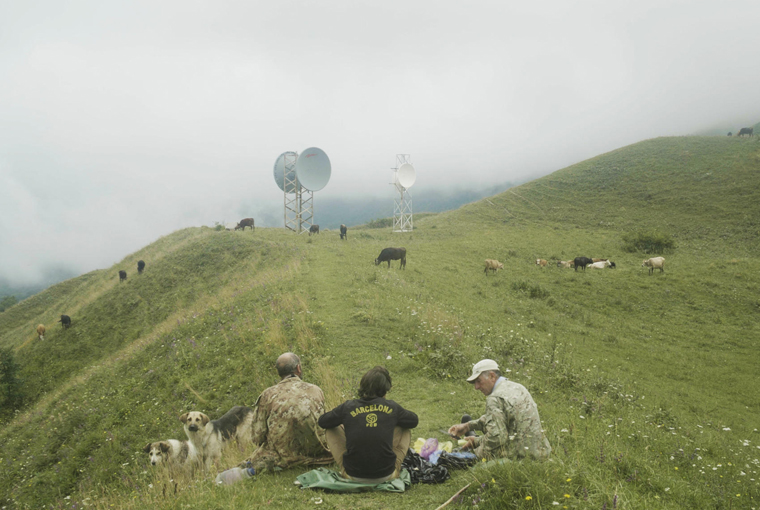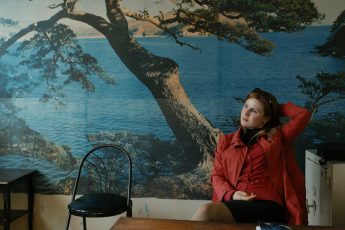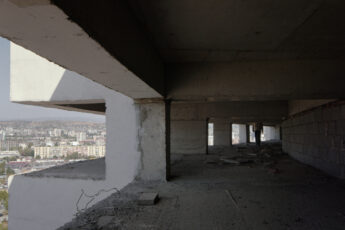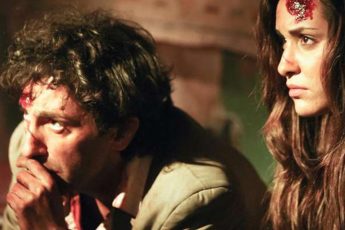Show Me the Bitcoin
Misho Antadze’s The Harvest (Mosavali, 2019)
Vol. 91 (January 2019) by Rohan Crickmar
The Harvest is a feature-length doc from the prolific young Georgian filmmaker Misho Antadze (Shevchenko, The Many Faces of Comrade Gelovani). Ostensibly a 70-minute study of the cryptocurrency boom in Georgia, the film is also a work of cartography, ecology and tech history, revealing the vineyard region of Kakheti to be the nexus point between agriculture, modern technological infrastructure and natural wilderness. Specifically focusing upon the growth in the region of massive computer banks for mining Bitcoin, the boundaries between the material and virtual worlds are frequently blurred, as Antadze explores the impact that new technologies are having upon this peripheral area of Europe.
Antadze studied Film and Video production at CalArts in Los Angeles, where his previous feature The Many Faces of Comrade Gelovani was produced in 2014. Antadze has developed a close observational style of documentary filmmaking that almost entirely dispenses with verbal commentary. His previous works have been visually arresting and rich in atmosphere, and The Harvest continues in this vein. A common tactic deployed throughout the film is to juxtapose the everyday, commonplace imagery of rural village life (butchery, dairy farming, soil cultivation), with the more exotic and abstract intimacies of the technological hardware that have popped up throughout the region (datahubs, computer banks, electricity and telecommunications cabling). Often Antadze’s intention is wryly comic, thus the flawed and outmoded mechanisms of a disability stairlift mean that a wheelchair-bound Bitcoin miner takes so much longer to move from his apartment to the computer bank he operates below. However, the film is just as concerned with the political, particularly when it comes to its study of environment, and the way that the natural landscape is being modified and restructured, first through agriculture and then through the growth of computer technology infrastructure.
Georgia has of course had a problematic political history in the 21st century, oftentimes seeming like a sacrificial pawn in the neo-liberal and neo-colonial politics between Putin’s Russia and the West. Kate Stonehill’s 2018 short film Fake News Fairytale – made for The Atlantic – told the tale of Sashko, a young, computer-literate teenager in Macedonia who was one of the many people in the town of Veles who were employed to produce fake news content. The goldrush that surrounded this surge in tech job opportunities in the area, seems mirrored in the Kakheti of The Harvest. Despite the relative wealth of the region through its wine production and export, Bitcoin mining seems to be something that captures the imagination of tech-savvy and intensely practical entrepreneurs in the area. The way in which large-scale investment in infrastructure to support the DIY computer banks and datahubs that spring up in villages throughout the region contrasts ironically with the lack of comparable agricultural investment, with many of the region’s farmers getting by with rather rudimentary technologies.
Where Antadze’s film is almost entirely unique is in the way it pulls back the curtain on the computer banks, in which so many of the rapid-fire, complex algorithms are solved. A hitherto hidden industry is fully visualized through a near “artist film” aesthetic concern with the motherboards, cooling fans and luminescent cabling of these noisy hives of virtual activity. Taking the audience into the very belly of the beast, The Harvest brings an intense curiosity to its final moments in which the nebulous space of the computer bank becomes a numinous space devoted to the worship of abstraction and temporality. The title card pointing out that Georgia is the world’s second largest miner of Bitcoin, belies the fact that this kind of cryptocurrency harvesting is still a peripheral pursuit that offers a questionable degree of economic opportunity. Antadze’s subtly ambivalent study of the impacts of this technology on a region, neatly captures the tension between the cutting edge and the bluntest of tools.




Leave a Comment